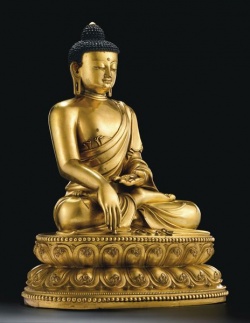On the Extinction of Mind
The twenty eighth and ninth verse in the Trimsika of Vasubandhu reads:
28. “when the mind no longer seizes on any object (alambana) whatever, then the mind is established in the nature of mind only (vijnanamatratva). When there is nothing that is grasped, that is mind only, because there is no grasping.”
29. “that is the supreme, world-transcending knowledge (Jnana), without mind (acitta) and without support or object of (anupalambha). From the abandonment of the two-fold faults, there occurs the revulsion (paravrtti) of the store-consciousness”.
One can easily sense some kind of an uneasiness or incompatibility in these last two verses of the foundational text of the philosophical system of Vijnanavada or Yogacara Buddhism. To cut to the chest, while it posits that mind is the ultimate reality and the only thing that actually existoneness the one hand, it also asserts that the ultimate goal or the Buddhahood is acitta, without mind, on the other. If the extinction of the mind is equivalent to Buddhahood or enlightenment, then it Buddhahood is the blowing out of the existence. But then it necessarily follows the question of what is “existence” or what exactly is the consciousness/mind that ‘exists’? When does the mind kicks off the quality or the attribute of existence?
The last sentence of the 29th verse suggests and I think acitta is achieved when the store-consciousness is emptied. This should be the case whatsoever existence means, because the it seems that the only factor the mind exists even in Bodhisattvas, logically, is that the store-consciousness is not completely emptied or blown out. The question of meaning of existence itself is crucial here, as Kant famously argued that “existence is not a predicate”, not an attribute.
The Yogacarins have to hold that existence means living in the cycle of samsara, they would certainly equate existence with samsara. Therefore, nirvana or Buddhahood is the “blowing out” the candle of existence.
Basic propositions:
1. Nothing exist but mind or consciousness in reality;
2. Human condition: accepts the Four Noble Truths as universal to all schools of Buddhism, that existence is suffering due to our ignorance and false desires in this cycle of samsara;
3. Enlightenment means blowing out the existence that is contingent to causes and conditions, a complete annihilation of the factors of samsaric entanglement.
From these basic Vijnanavadin propositions, we can conclude what they posits as existence on a gross level, but on a subtle level, a being exists as long as it doesn’t have achieved nirvana. The candle of existence is blown out when acitta is attained, transcendence above and beyond existence.
